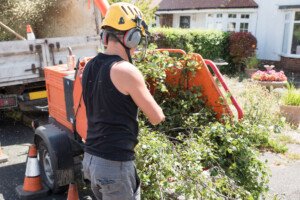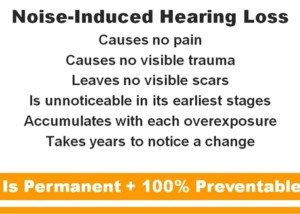I’m stunned that often, I see men without hearing protection working around wood chippers.
Wood chippers can be screaming loud, yet many workers continue to “chip” without protection for their ears. A typical wood chipper comes in at 110 decibels.
A decibel is a unit of sound volume. Working all day around 110 dBs, even if it’s not continuous, is asking for a lot of trouble.
For comparison, a chainsaw is 105 decibels. This data is from Cornell University’s Toolbox Safety Talk Hearing Conservation guidelines.
Rachel Raphael, M.A., CCC-A, an audiologist with ENT Baltimore, explains that she would “urge anyone using this or other loud construction tools, drills, saws, mowers, etc., to use hearing protection!”
SHALL IT BE THIS ?

OR THIS ?

Shutterstock/Andrey_Popov
Sometimes I DO see tree workers with industrial ear muffs while around the wood chipper.
And I’m sure there are those who wear custom-made ear plugs which an observer would not be able to see.
But many don’t think about damage to their ears from these machines and hence, go without protection.
“Young people think they’re not vulnerable to hearing loss (because young ears and hair cells usually bounce back initially from loud exposure), but over time, the temporary damage turns into permanent damage, and for now, scientists have not been able to regenerate hair cell growth in human cochleas (only in some lower forms of lab animals),” explains Raphael.
“I tell my patients to take care of the hearing they have control over, because soon enough, we will all ultimately suffer the effects of hearing loss that comes with old age.
“And although digital hearing aids are smaller and more sophisticated than ever, they will never be as good as our own healthy normal hearing ears.”
To guard against hearing loss when around a wood chipper, drug store earplugs may not be effective enough.
You may be able to find a good pair from an online retailer, but you’ll need to try different kinds.
If you don’t succeed, you can always use the muffs or custom made earplugs.











































